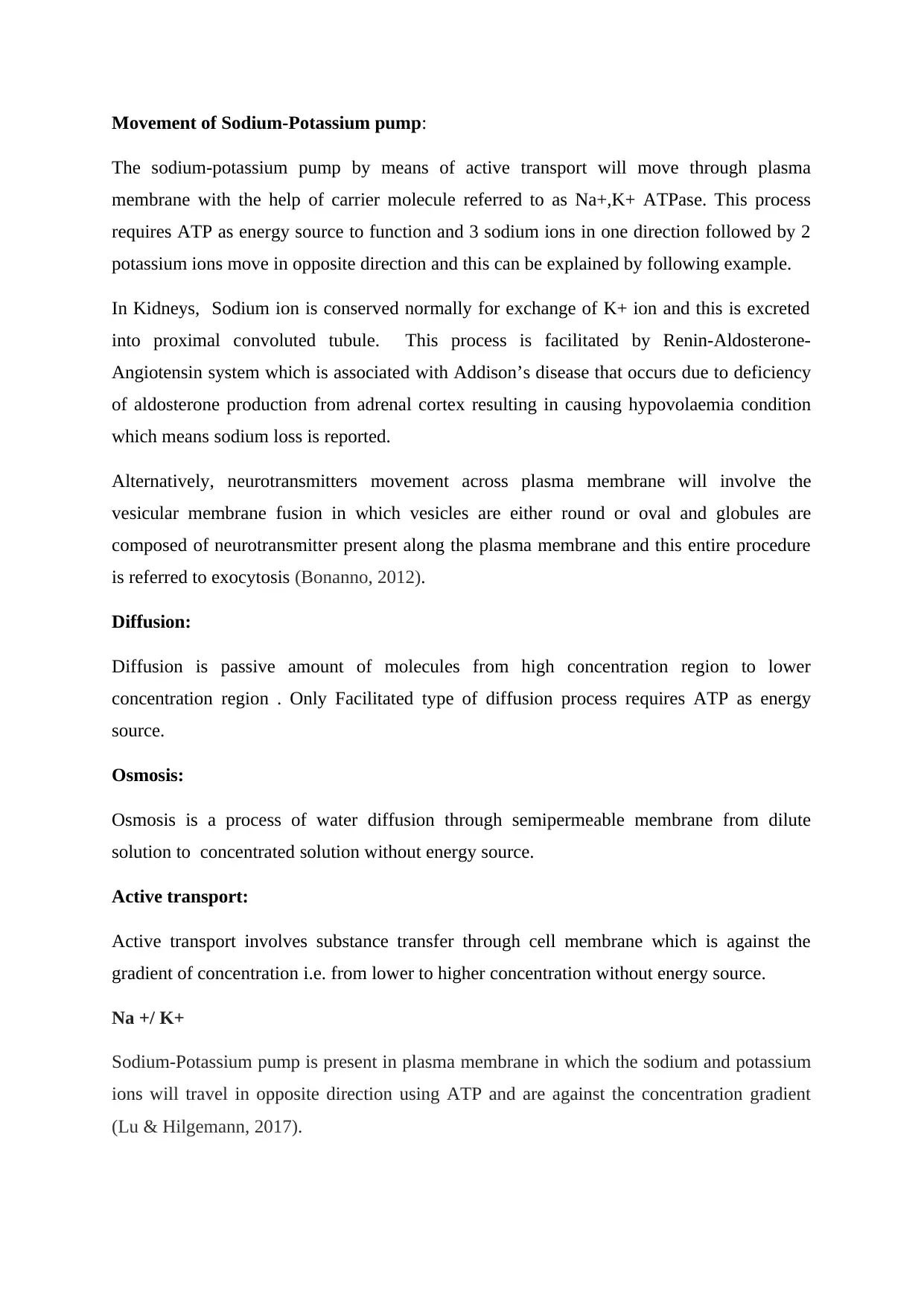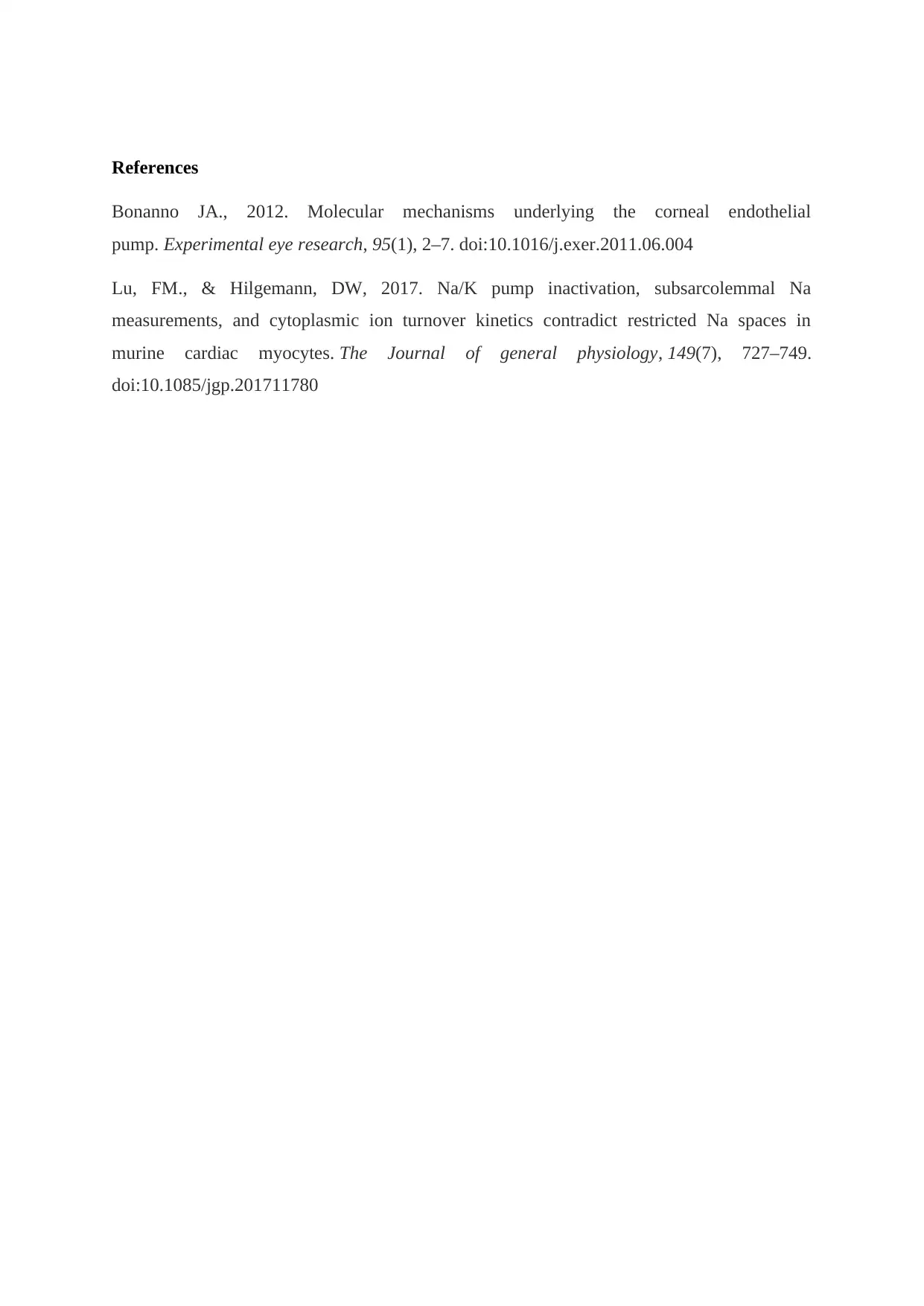Biology Assignment: Sodium-Potassium Pump, Transport, and Diffusion
VerifiedAdded on 2022/08/19
|2
|363
|13
Homework Assignment
AI Summary
This assignment delves into the sodium-potassium pump, a critical component of cellular transport. It explains the process of active transport, facilitated by the Na+/K+ ATPase, which requires ATP to move sodium and potassium ions against their concentration gradients. The assignment references the kidneys and the renin-angiotensin-aldosterone system, highlighting how this pump is essential for maintaining electrolyte balance. It also touches upon neurotransmitter movement, involving vesicular membrane fusion and exocytosis. The assignment differentiates between diffusion and osmosis, emphasizing that only facilitated diffusion requires energy. Furthermore, the assignment includes references to relevant research papers, supporting the understanding of the sodium-potassium pump and its biological implications.
1 out of 2








![[object Object]](/_next/static/media/star-bottom.7253800d.svg)